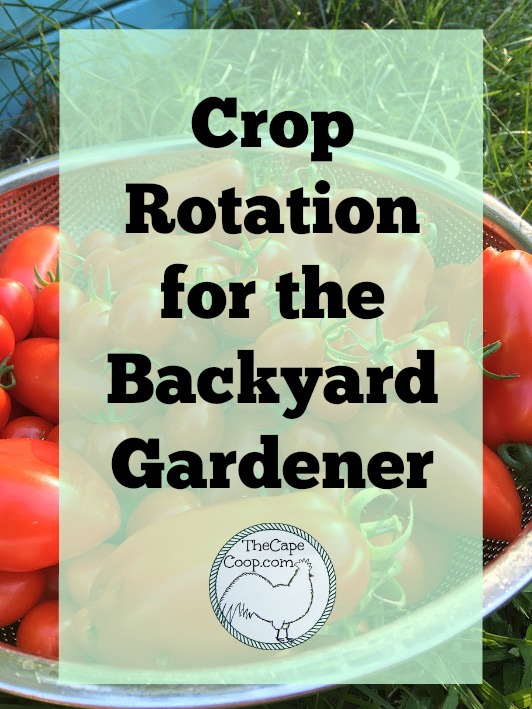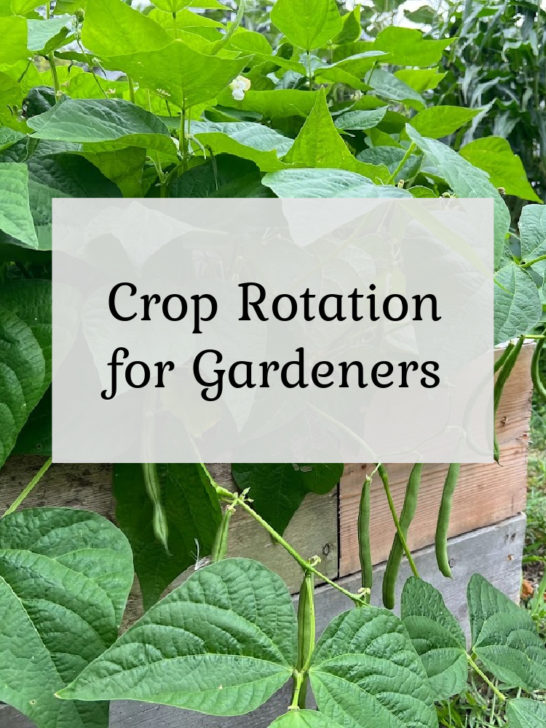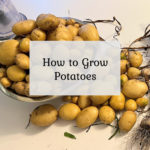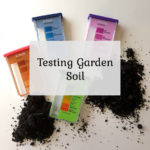---------------------------------------------------------
You don’t have to be a commercial farmer with 100 acres to reap the benefits of crop rotation. Actually, it is even MORE critical for garden success for the small-scale backyard farmer to rotate crops!
What is crop rotation?
Crop rotation is a centuries-old practice and a way to ensure many years of sustainable, fertile, healthy soil. Healthy soil equals huge harvests and happy plants! There are many ways to implement it, but crop rotation is a system of thoughtfully planting crops year after year, moving crops to different areas of the garden each season.

Why rotate crops?
Different plants have different growing requirements. For example, if you grow tomatoes in the same spot every season, you will notice each year your harvest gets smaller and smaller. Tomatoes are heavy nitrogen feeders and eventually, they will deplete the soil of the nutrients needed to grow and produce fruit.
Rotating crops also helps with disease management. Many pathogens, pests & plant diseases only affect plants from the same botanical family. By planting a different type of plant the next season, you will deprive those nasties of the food they need to flourish. The longer one type of plant is grown in the same spot, the higher the likelihood of pest or disease problems.
Early blight can devastate production for nightshade family members (tomatoes, potatoes, eggplant, peppers) and can overwinter in the soil to affect your plants year after year. Rotate those plants to another section of the garden and you will see much better results. A study done by the Pennsylvania State University tracked early blight in tomatoes grown in the same spot for 3 years. They found in the first year 3% of plants were infected and by year three 74% of plants were infected.
Switching up root structures each growing season, from shallow rooted greens, to complex rooted tomatoes & squash, and root vegetables, will improve the soil structure & help control erosion.

How to get started
There are lots of ways to go about starting a crop rotation system. There is no one right way to do it, but they all start with keeping a farm journal. Recording where you planted what each year is vital to a good rotation system. Click here to read more about farm journaling.
A perfect crop rotation system would involve moving crops about to factor in their nutritional needs, potential pathogens, pests, and root structure. That can get super complicated, and require a lot of different crops and a large space. It’s more than your average backyard farmer needs or has the resources for. I don’t know about you but I am not likely to follow through if it’s a super complicated system! This is the way I group plants to rotate:
Leaf crops (anything grown for its leaves or flowers): lettuce, annual herbs, broccoli, spinach
Fruit crops (anything grown for its fruit): tomatoes, peppers, eggplant, squash, corn, cucumbers, potatoes (yes technically a root crop but it’s more important to keep it with its nightshade family members)
Root crops (things grown for its roots): carrots, onions, radishes, beets, turnips
Beans & fixers (legumes enrich the soil): beans, peas, and cover crops (click here to read about enriching cover crops)

Beans & fixers add nitrogen to soil, “fixing” it and preparing it for heavy-feeding, nitrogen-loving fruit crops
Leafy crops are light feeders so can handle coming after the fruit crops
Root crops break up the soil, preparing it for bean & fixers who love loose soil textures
I rotate in this order:
Root Crop
Beans & Fixers
Fruit Crop
Leafy Crop
Rotation will look different for every gardener
I have several raised garden beds which makes rotating crops each season easier. One year, bed #1 will have mostly root crops, the next year beans & fixers, the next year fruit crop, followed by leafy crops. Then repeat. I don’t always stick strictly to “the rules”. I like to mix my beds up a little bit and take advantage of companion planting, but I try to keep the bed to mostly that year’s crop family.
There is no one right schedule. Find a pattern that works for you. What matters most is that each season you are changing things up. If you only grow tomatoes and cucumbers that’s fine too. Just swap the locations around each season to prevent diseases and test your soil (click here to read about soil testing) so you know when to add amendments for soil health.
What if you only have one small garden bed? You can still practice crop rotation by rotating the plants into different sections of the bed. But you may have better luck with just replacing 50% or more of your soil each year. You can use the “discarded” soil to amend flower beds or mulch around bushes.
What about companion planting (click here to read more)? Square foot gardening (click here to read more)? You can still practice crop rotation with these methods. Square foot gardening is easy because you already have your garden beds sectioned off in squares, so you can rotate the squares. Companion planting is a little trickier because you could be planting different crop families in the same space. If your companion plants are from different families (like beans & corn), avoid planting either of those families in that spot next year.







Ann @ Live The Old Way
Monday 15th of October 2018
I love your raised beds! We have terrible soil (clay and rock and more rock) and I keep telling myself I'm going to add some deep raised beds. Thanks for sharing this with us at the Homestead Blog Hop!